#US South West
Text
Hi friends :]! My name is Milo and I'm 18 (she/they, nonbinary lesbian)
🌻 I love art! Painting, animating, writing/reading anything from queer romance to sad lesbian poetry
🌻 WITCHCRAFT!! Tarot and oracles are my besties, talking to crows occasionally, devoting apricots to Apollo
🌻Favorite books? The Song of Achilles, Aristotle & Dante, The Little Prince, The Alchemist
🌻Professional procrastinator in the field of: Adventure time, Good Omens, Voltron, MHA, Kitchen Nightmares
🌻 Plant mom, bass guitar enjoyer, proud birb parent
I'm looking for a friend to send letters to (with stickers, scraps of poetry and maybe way too many Mitski lyrics, too) or a bestie to just goof around on the internet with :)
If you're interested, shoot me a text on my insta: @terryble.exe
Or here on Tumblr: @sheriff_milo
#Pen-pals#US North West#US South West#Friends in your city#Pansexual#Lesbian#Canada#17 to 19#US MidWest#Australia#Gay#13 to 16#United Kingdom#US North East#Asexual#20 to 25#FTM#Transgender#United States#US South East#Bisexual#25+#MTF#submission#Queer
7 notes
·
View notes
Text
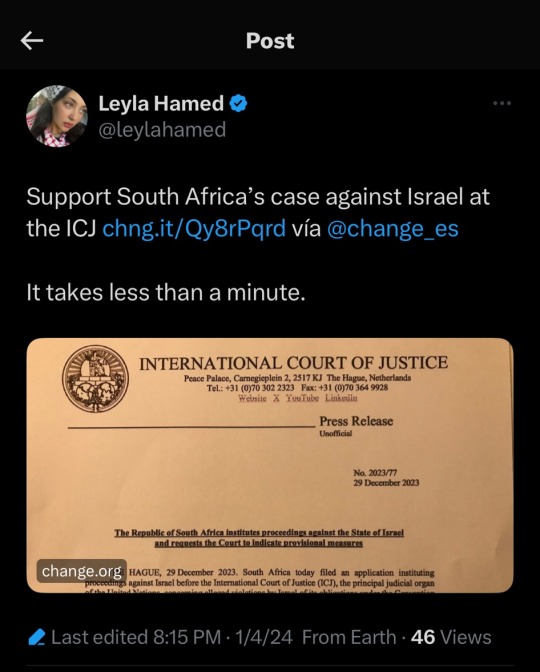
#free palestine#gaza#west bank#free gaza#signal boost#ceasefire now#usa news#us politics#jerusalem#social justice#feminism#lgbtq#south africa#international criminal court#world news#pjo tv show#percy jackson
125 notes
·
View notes
Text
Seeing fan discussions about Blue Eye Samurai and especially Mizu's identity is so annoying sometimes. So let me just talk about it real quick.
First off, I have to emphasise that different interpretations of the text are always important when discussing fiction. That's how the whole branch of literary studies came to be, and what literary criticism and analysis is all about: people would each have their own interpretation of what the text is saying, each person applying a different lens or theory through which to approach the text (ie. queer theory, feminist theory, reader response theory, postcolonial theory, etc) when analysing it. And while yes, you can just take everything the authors say as gospel, strictly doing so would leave little room for further analysis and subjective interpretation, and both of these are absolutely necessary when having any meaningful discussion about a piece of media.
With that being said, when discussing Blue Eye Samurai, and Mizu's character in particular, I always see people only ever interpret her through a queer lens. Because when discussing themes of identity, yes, a queer reading can definitely apply, and in Mizu's story, queer themes are definitely present. Mizu has to hide her body and do her best to pass in a cisheteronormative society; she presents as a man 99% of the time and is shown to be more comfortable in men's spaces (sword-fighting) than in female spaces (homemaking). Thus, there's nothing wrong with a queer reading at all. Hell, some queer theorists interpret Jo March from Little Women as transmasc and that's totally valid, because like all analyses, they are subjective and argumentative; you have the choice to agree with an interpretation or you can oppose it and form your own.
To that end, I know many are equally adamant that Mizu is strictly a woman, and that's also also a completely valid reading of the text, and aligns with the canon "Word of God", as the creators' intention was to make her a woman. And certainly, feminist themes in the show are undeniably present and greatly colour the narrative, and Episode 4 & 5 are the clearest demonstrations of this: Mizu's protectiveness of Madame Kaji and her girls, Mizu's trauma after killing Kinuyo, her line to Akemi about how little options women have in life, and the way her husband had scorned her for being more capable than him in battle.
I myself personally fall into the camp of Mizu leaning towards womanhood, so i tend to prefer to use she/her pronouns for her, though I don't think she's strictly a cis woman, so I do still interpret her under the non-binary umbrella. But that's besides my point.
My gripe here, and the thing that spurred me to write this post, is that rarely does this fandom even touch upon the more predominant themes of colonialism and postcolonial identities within the story. So it definitely irks me when people say that the show presenting Mizu being cishet is "boring." While it's completely fine to have your opinion and to want queer rep, a statement like that just feels dismissive of the rest of the representation that the show has to offer. And it's frustrating because I know why this is a prevalent sentiment; because fandom culture is usually very white, so of course a majority of the fandom places greater value on a queer narrative (that aligns only with Western ideas of queerness) over a postcolonial, non-Western narrative.
And that relates to how, I feel, people tend to forget, or perhaps just downplay, that the crux of Mizu's internal conflict and her struggle to survive is due to her being mixed-race.
Because while she can blend in rather seamlessly into male society by binding and dressing in men's clothing and lowering her voice and being the best goddamn swordsman there is, she cannot hide her blue eyes. Even with her glasses, you can still see the colour of her eyes from her side profile, and her glasses are constantly thrown off her face in battle. Her blue eyes are the central point to her marginalisation and Otherness within a hegemonic society. It's why everyone calls her ugly or a monster or a demon or deformed; just because she looks different. She is both white and Japanese but accepted in neither societies. Her deepest hatred of herself stems primarily from this hybridised and alienated identity. It's the whole reason why she's so intent on revenge and started learning the way of the sword in the first place; not to fit in better as a man, but to kill the white men who made her this way. These things are intrinsic to her character and to her arc.
Thus, to refuse to engage with these themes and dismiss the importance of how the representation of her racial Otherness speaks to themes of colonialism and racial oppression just feels tone-deaf to the show's message. Because even if Mizu is a cishet woman in canon, that doesn't make her story any less important, because while you as a white queer person living in the West may feel unrepresented, it is still giving a voice to the stories of people of colour, mixed-race folks, and the myriad of marginalised racial/ethnic/cultural groups in non-Western societies.
#blue eye samurai#mizu blue eye samurai#fandom critical#blue eye samurai meta#wank.mp3#shut up haydar#fandom.rtf#this is a bit of rant but the prevalent whiteness of fandom in general just gets on my nerves i'm sorry#giving me flashbacks to a:tla fandom fr cuz it's the same shit! people love to devalue the stories of non-white non-western identities#also to be clear i am a southeast asian living in southeast asia and similar to mizu i am often alienated for having mixed ethnic ancestry#and even for speaking english (bcs my granddad served the fuckin. british colonials. so my fam speaks mostly in english)#cuz where im from it's still extremely hegemonic racist patriarchal misogynistic homophobic like the setting in the show#so like even though the story is set in historical japan and may seem far-removed from the experiences of a US or european audience#those of us outside the west and in the global south still face a lot of the struggles that mizu goes through till this very day#so please dont just dismiss that. it feels incredibly tone-deaf#okay rant over
55 notes
·
View notes
Text
You’re blind, dumb, delusional or a combination of all three if you don’t think these situations are identical. My entire family lived through South African apartheid. My father and his family were subject to constant abuse even though they weren’t black. My family is of Indian descent which means they came to South Africa as indentured labourers. All POC in South Africa (black people, Indian people and coloured people) were subject to absolute horrors. My family suffered unimaginably and still have PTSD to this day and yet their suffering pales in comparison to the suffering of our black brothers and sisters. If anything, Palestinian apartheid is worse. They are being bombed, barricaded and killed en masse. Children are being raised knowing nothing but a life of war and violence. Children are being kept as political prisoners. Hospitals, churches, schools and mosques are being bombed to high heaven. If you think what is happening is self defence you are entitled, privileged and have not known a day of proper suffering in your life. There is a reason most of Israel’s support comes from first world countries and white people. Palestine has the right to fight back. As Nelson Mandela said, if there is no other option, we will use violence.
“The freedom of South Africa remains incomplete without the freedom of Palestine”
#none of us are free till the last one of us is free#free gaza#free palestine#palestine#anti israel#anti zionism#apartheid#end apartheid#nelson mandela#anti netanyahu#anti idf#anti invaders#anti colonization#anti oppression#anti imperialism#anti fascism#anti occupation#Gaza#west bank#South Africa#South African apartheid#Palestinian apartheid#ethnic cleansing#genocide
72 notes
·
View notes
Text
I have finally watched The Creator yesterday. Watching that while the genocide in Palestine is currently unfolding was very, very painful.
Reviews on letterboxd I've seen focused so much on the what they perceived to be "boring sci-fi trope of wow robots have feelings/souls too" and neglected to point out how this film shows how US military DEHUMANIZE people.
It really grinds my gears how many people missed the totally not-subtle anti-military, anti-imperialism aspect at the very heart of the film.
#i do agree though the script is NOT good#the characters and the interactions and the emotional moments could've been written better#but as someone from Global South I absolutely adore the way they show how dehumanization works#i will probably say more about this film later. esp in regards to us war on terror and the on-going genocide of palestinian people. also th#whole 'A.I. must be stopped cus they will replace human' thing made me think about how people excusing israeli ethnonationalism#because 'Arab birth rate' would replace Israelis or whatever. that's why Palestinian children are considered to be massive threat to Israel#and this film a 'choosen child' is considered to be the highest threat to West military#The Creator#Gareth Edwards#John David Washington#The Creator 2023#/text mine
50 notes
·
View notes
Text
instagram

#south africa#south Africa 🇿🇦#uk#uk politics#usa news#us politics#genocide#palestine#gaza#west bank#endisraelsgenocide#Instagram
35 notes
·
View notes
Text
South African politician expertly pointing out the logical action: " None of these political parties made a single statement directly condemning and asking Israel to stop blowing up these children and these hospitals. 75 years negotiations have been taking place; nothing has been achieved. So what negotiations are we talking about? What do you want to negotiate? The only way you can negotiate is by putting pressure on them to come to the negotiating table, and that is what we are doing. We are now putting pressure today: 'Let's have a ceasefire'; Why is there this thing about going on killing and killing and killing? Why can't we stop it and say let's sit down and talk about it? They could have played a pivotal role, chairperson, in bringing pressure to the Israelis, together with all of us and say let's find a peaceful solution. They're not interested in that. Do you know why? It's all about the money that they get. This is what it is. They've sold their souls."
#South Africa#Politics#South African politics#Palestine#Free Palestine#Save Palestine#Truth#Important#Education#Educate yourselves#Israel#Israel is a terrorist state#Us#UK#UN#GAZA#Free GAZA#The West Bank#Genocide#Ethnic cleansing#Ceasefire now#Decolonise Palestine#Watermelon#🍉 🇵🇸#Illegal occupation#Illegal invasion#Illegal settlement
31 notes
·
View notes
Text
On May 28, 1914, the Institut für Schiffs-und Tropenkrankheiten (Institute for Maritime and Tropical Diseases, ISTK) in Hamburg began operations in a complex of new brick buildings on the bank of the Elb. The buildings were designed by Fritz Schumacher, who had become the Head of Hamburg’s building department (Leiter des Hochbauamtes) in 1909 after a “flood of architectural projects” accumulated following the industrialization of the harbor in the 1880s and the “new housing and working conditions” that followed. The ISTK was one of these projects, connected to the port by its [...] mission: to research and heal tropical illnesses; [...] to support the Hamburg Port [...]; and to support endeavors of the German Empire overseas.
First established in 1900 by Bernhard Nocht, chief of the Port Medical Service, the ISTK originally operated out of an existing building, but by 1909, when the Hamburg Colonial Institute became its parent organization (and Schumacher was hired by the Hamburg Senate), the operations of the ISTK had outgrown [...]. [I]ts commission by the city was an opportunity for Schumacher to show how he could contribute to guiding the city’s economic and architectural growth in tandem, and for Nocht, an opportunity to establish an unprecedented spatial paradigm for the field of Tropical Medicine that anchored the new frontier of science in the German Empire. [...]
[There was a] shared drive to contribute to the [...] wealth of Hamburg within the context of its expanding global network [...]. [E]ach discipline [...] architecture and medicine were participating in a shared [...] discursive operation. [...]
---
The brick used on the ISTK façades was key to Schumacher’s larger Städtebau plan for Hamburg, which envisioned the city as a vehicle for a “harmonious” synthesis between aesthetics and economy. [...] For Schumacher, brick [was significantly preferable] [...]. Used by [...] Hamburg architects [over the past few decades], who acquired their penchant for neo-gothic brickwork at the Hanover school, brick had both a historical presence and aesthetic pedigree in Hamburg [...]. [T]his material had already been used in Die Speicherstadt, a warehouse district in Hamburg where unequal social conditions had only grown more exacerbated [...]. Die Speicherstadt was constructed in three phases [beginning] in 1883 [...]. By serving the port, the warehouses facilitated the expansion and security of Hamburg’s wealth. [...] Yet the collective profits accrued to the city by these buildings [...] did not increase economic prosperity and social equity for all. [...] [A] residential area for harbor workers was demolished to make way for the warehouses. After the contract for the port expansion was negotiated in 1881, over 20,000 people were pushed out of their homes and into adjacent areas of the city, which soon became overcrowded [...]. In turn, these [...] areas of the city [...] were the worst hit by the Hamburg cholera epidemic of 1892, the most devastating in Europe that year. The 1892 cholera epidemic [...] articulated the growing inability of the Hamburg Senate, comprising the city’s elite, to manage class relationships [...] [in such] a city that was explicitly run by and for the merchant class [...].
In Hamburg, the response to such an ugly disease of the masses was the enforcement of quarantine methods that pushed the working class into the suburbs, isolated immigrants on an island, and separated the sick according to racial identity.
In partnership with the German Empire, Hamburg established new hygiene institutions in the city, including the Port Medical Service (a progenitor of the ISTK). [...] [T]he discourse of [creating the school for tropical medicine] centered around city building and nation building, brick by brick, mark by mark.
---
Just as the exterior condition of the building was, for Schumacher, part of a much larger plan for the city, the program of the building and its interior were part of the German Empire and Tropical Medicine’s much larger interest in controlling the health and wealth of its nation and colonies. [...]
Yet the establishment of the ISTK marked a critical shift in medical thinking [...]. And while the ISTK was not the only institution in Europe to form around the conception and perceived threat of tropical diseases, it was the first to build a facility specifically to support their “exploration and combat” in lockstep, as Nocht described it.
The field of Tropical Medicine had been established in Germany by the very same journal Nocht published his overview of the ISTK. The Archiv für Schiffs- und Tropen-Hygiene unter besonderer Berücksichtigung der Pathologie und Therapie was first published in 1897, the same year that the German Empire claimed Kiaochow (northeast China) and about two years after it claimed Southwest Africa (Namibia), Cameroon, Togo, East Africa (Tanzania, Burundi, Rwanda), New Guinea (today the northern part of Papua New Guinea), and the Marshall Islands; two years later, it would also claim the Caroline Islands, Palau, Mariana Islands (today Micronesia), and Samoa (today Western Samoa).
---
The inaugural journal [...] marked a paradigm shift [...]. In his opening letter, the editor stated that the aim of Tropical Medicine is to “provide the white race with a home in the tropics.” [...]
As part of the institute’s agenda to support the expansion of the Empire through teaching and development [...], members of the ISTK contributed to the Deutsches Kolonial Lexikon, a three-volume series completed in 1914 (in the same year as the new ISTK buildings) and published in 1920. The three volumes contained maps of the colonies coded to show the areas that were considered “healthy” for Europeans, along with recommended building guidelines for hospitals in the tropics. [...] "Natives" were given separate facilities [...]. The hospital at the ISTK was similarly divided according to identity. An essentializing belief in “intrinsic factors” determined by skin color, constitutive to Tropical Medicine, materialized in the building’s circulation. Potential patients were assessed in the main building to determine their next destination in the hospital. A room labeled “Farbige” (colored) - visible in both Nocht and Schumacher’s publications - shows that the hospital segregated people of color from whites. [...]
---
Despite belonging to two different disciplines [medicine and architecture], both Nocht and Schumacher’s publications articulate an understanding of health [...] that is linked to concepts of identity separating white upper-class German Europeans from others. [In] Hamburg [...] recent growth of the shipping industry and overt engagement of the German Empire in colonialism brought even more distant global connections to its port. For Schumacher, Hamburg’s presence in a global network meant it needed to strengthen its local identity and economy [by purposefully seeking to showcase "traditional" northern German neo-gothic brickwork while elevating local brick industry] lest it grow too far from its roots. In the case of Tropical Medicine at the ISTK, the “tropics” seemed to act as a foil for the European identity - a constructed category through which the European identity could redescribe itself by exclusion [...].
What it meant to be sick or healthy was taken up by both medicine and architecture - [...] neither in a vacuum.
---
All text above by: Carrie Bly. "Mediums of Medicine: The Institute for Maritime and Tropical Diseases in Hamburg". Sick Architecture series published by e-flux Architecture. November 2020. [Bold emphasis and some paragraph breaks/contractions added by me. Text within brackets added by me for clarity. Presented here for commentary, teaching, criticism purposes.]
#abolition#ecology#sorry i know its long ive been looking at this in my drafts for a long long time trying to condense#but its such a rich comparison that i didnt wanna lessen the impact of blys work here#bly in 2022 did dissertation defense in architecture history and theory on political economy of steel in US in 20s and 30#add this to our conversations about brazilian eugenics in 1930s explicitly conflating hygiene modernist architecture and white supremacy#and british tropical medicine establishment in colonial india#and US sanitation and antimosquito campaigns in 1910s panama using jim crow laws and segregation and forcibly testing local women#see chakrabartis work on tropical medicine and empire in south asia and fahim amirs cloudy swords#and greg mitmans work on connections between#US tropical medicine schools and fruit plantations in central america and US military occupation of philippines and rubber in west africa
13 notes
·
View notes
Text
tbh in brazil we don't really use north south east west as directions, dare i say even knowing which is which is uncommon 😭 i literally only learned them when i was doing an aviation course and didn't really use it afterwards
#now i use it in architecture as its mandatory for floor plans to have it as the solar incidence affects the building etc etc#but directions...? honey just go straight ahead then left then right#are gringos using it bc their streets are actually lined up the same as north south east west or are they using it instead of#ahead down right left...?
9 notes
·
View notes
Text

USS Massachusetts (BB-59) underway after her refit at the Puget Sound Naval Shipyard, Washington, circa in July 1944.
Note: she is painted in Measure 22.
United States Navy, "A pictorial history of the U.S.S. Massachusetts" (1945). World War Regimental Histories. 150. https://digicom.bpl.lib.me.us/ww_reg_his/150
#USS Massachusetts (BB-59)#USS Massachusetts#South Dakota Class#battleship#warship#ship#boat#puget sound navy yard#Puget Sound#Washington#west coast#World War II#World War 2#WWII#WW2#WWII History#History#united states navy#us navy#navy#usn#u.s. navy#my post
33 notes
·
View notes
Text
Hi I’m Winter! 🥰
I’m 24 and live in Texas. I’m non-binary (they/them or it/its pronouns preferred), demisexual, pansexual, on the autism spectrum 🙂
Really just looking to make some more online friends! I’m super nerdy and love anything geeky- Marvel, Doctor Who, Star Wars, etc! I also love to read and listen to music!
Feel free to message me (if you’re over 18!)
#25+#MTF#Queer#Lesbian#US North West#Gay#submission#FTM#Pen-pals#13 to 16#Transgender#Bisexual#Asexual#Canada#US South West#US MidWest#Friends in your city#US South East#Pansexual#US North East#17 to 19#United Kingdom#United States#Australia#20 to 25
8 notes
·
View notes
Text
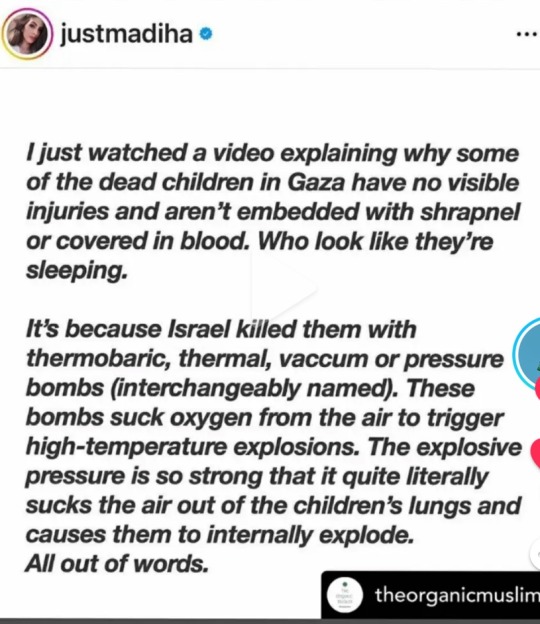
#free palestine#west bank#gaza#gaza strip#jerusalem#ceasefire now#south africa#international court of justice#icj#social justice#lgbtq#middle east#usa news#us politics
69 notes
·
View notes
Text

Meridian: an imaginary line
#ispy.png#aotr#knicknacks#meridian midas#girls when they turn lines into characaters#do you guys like aotr its just a bynch of lines.#did you guys know that longitude lines are all meridians (they help measure the east and west by connecting the north and south poles)#but like the equator is a latitude just fully in the middle#the prime meridian is the longitude that gets defined at 0° and splits the hemispheres#basically that#idk its cool 2 me#the equator does the same thing with the other two hemispheres#im a prime meridian fan boy no one ever talks avout the prime meridian#its always about the hottest line on the map and not that random imaginary meridian that shows you were things are from east to west#the equators imaginary too but i guess since its location is physically always hot it gets used more often in day 2 day#well. geography lesson is over lookit my lines
17 notes
·
View notes
Text
"Biden is the best choice and he's actually really empathetic and reasonable but also you can't wait for a candidate that won't do genocide and war crimes because to become a presidential candidate you have to be willing to do that" see what you fundamentally don't understand is I'm not waiting for a candidate that won't do war crimes, because I know that. I cannot morally stomach this system, it's a joke to claim its democratic, and AMERICA DELENDA EST. this country is a plague on this Earth
#cipher talk#It's baffling because okay so you know how fucked up this is but you're behaving in a way that clearly indicates you want that this shambli#Disgusting empire to cling to life until after you're dead because it'd make /you/ uncomfortable and inconvenienced#To live through its destruction (the wealthier classes and more privileged experience lesser material changes in state collapse so long as#They aren't too highly ranked/involved in politics. A Sri Lankan wrote an article specifically addressing Americans about this)#It's so dehumanizing! People's blood is so cheap to you! You've just accepted its inevitable that genocide will happen!#Because of how the US operates! You can see no other future! It hardly matters to you!#You say this like the death of Palestinians of Yemenis of Syrians is someone else's dropped ice cream cone#You understand why people hate this country and you understand we deserve it but it just. Hardly matters to you#It feels like madness to watch this. It's disgusting#I keep thinking- it'd be so easy for you to justify my people being killed if violence broke out and it was in your favor#It's unlikely because. Well. America loves 'the church of the martyrs'#But you'd do it if that was favorable. You wouldn't think twice. You might feel a twinge in your heart but that's all#Because we aren't people to you!#We aren't all that important! Not important enough for you do anything more than 'well let's vote a blue in and do some protests'#What's a protest worth if you perpetuate the system and can't see a way out and don't try for a way out?#That's killing a man then putting flowers on his casket. It's /perverse/.#You get used to the idea that Africans die that West Asians die and that's just the way of the world. My g-d do you understand anything??#I watch necrosis take hold my parts of my culture and I watch every good person I know be ground to dust under a military regime#I talk to my friend who got drafted and is trans and may never come out because if they do they can get arrested as a 'prostitute'#I watch the wild hope for the future I was introduced to over radio at 9 years old wither#I watch people risk it anyway because just past the fence they can see they know there are people there#I watch my neighbor to the south crumble and weep because our hands are bloody and it's in part because we bloodied them for the west#And you just think that's how things are.#Fascist white death cult mindset
8 notes
·
View notes
Text
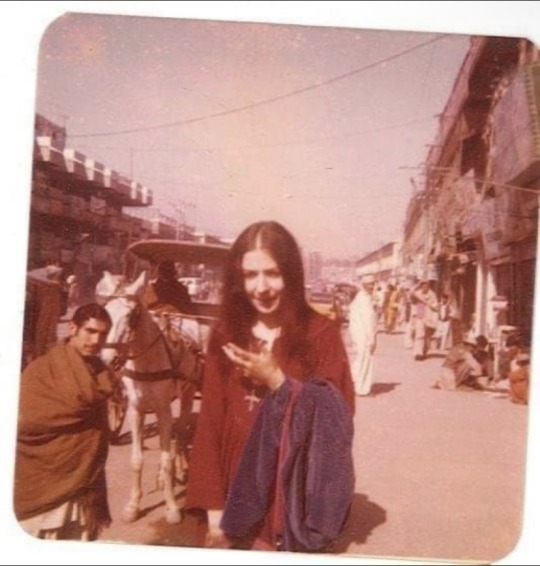
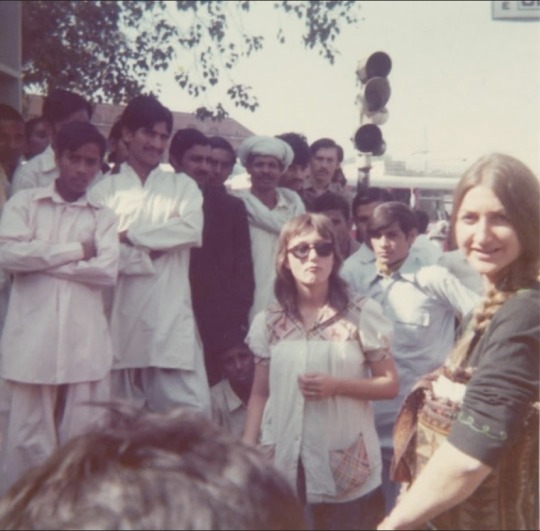




European tourists on the hippie trail in KPK, Pakistan in the 70s
#Pakistan#khyber pakhtunkhwa#my dad tells me about the hippies that used to come tho his village from all over mainly germany uk france tho#kpk#the hippie trail#Peshawar#pekhawar#nwfp#north west frontier province#own post#70s#south asia#photography
22 notes
·
View notes
Text
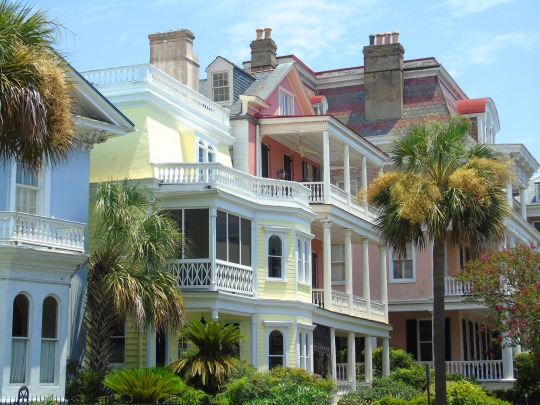
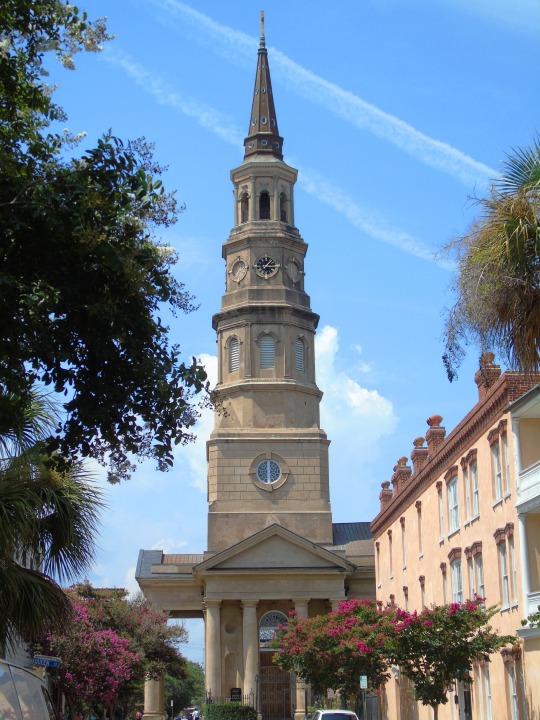
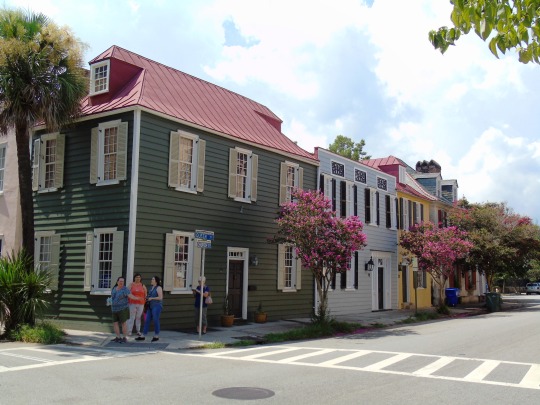
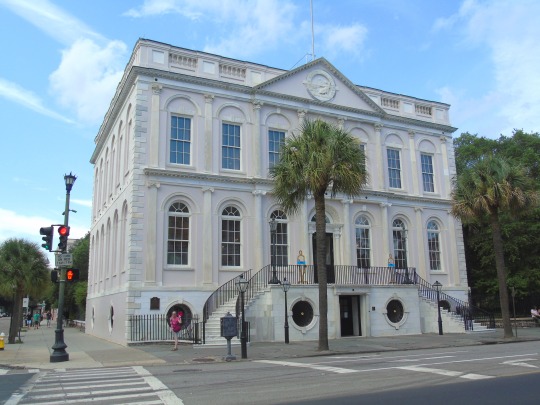


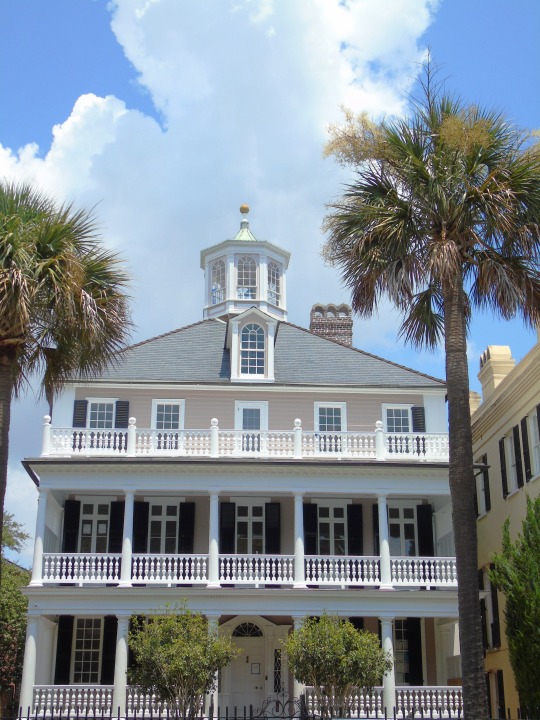

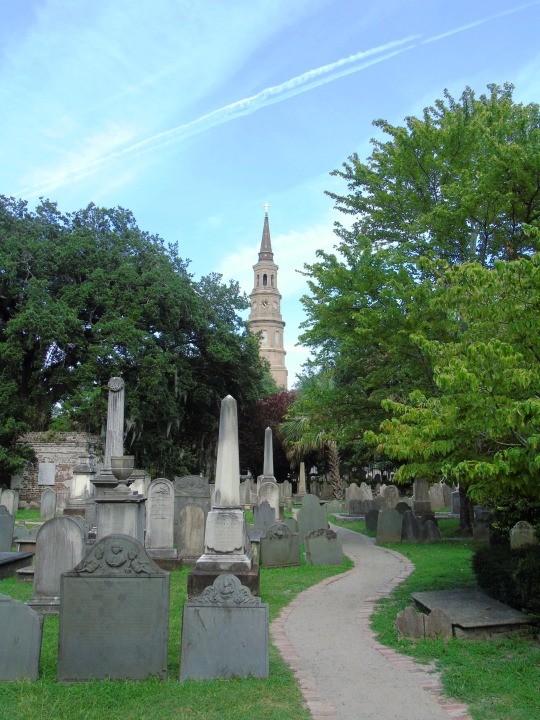

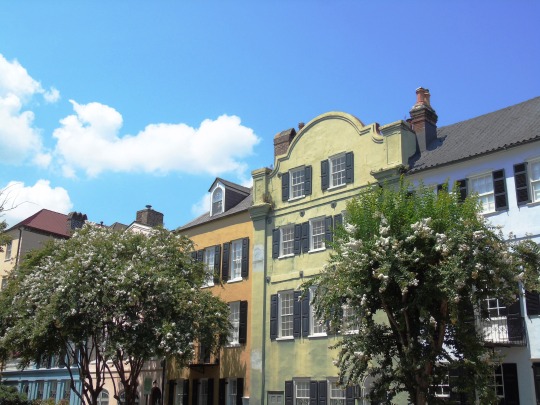
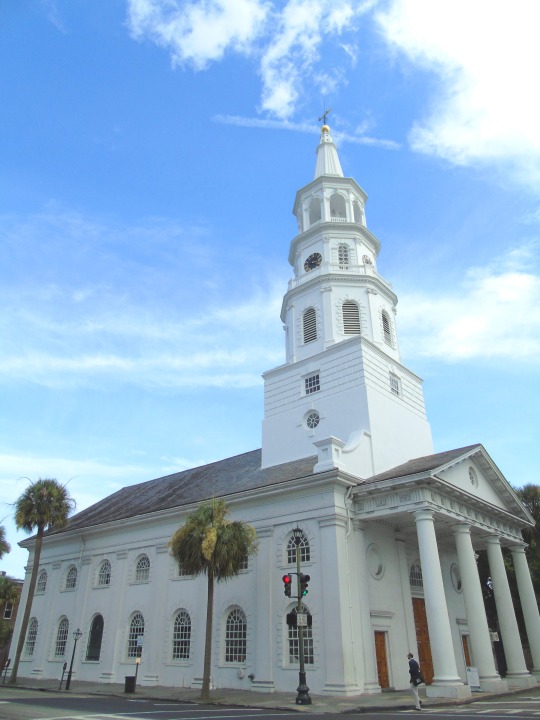
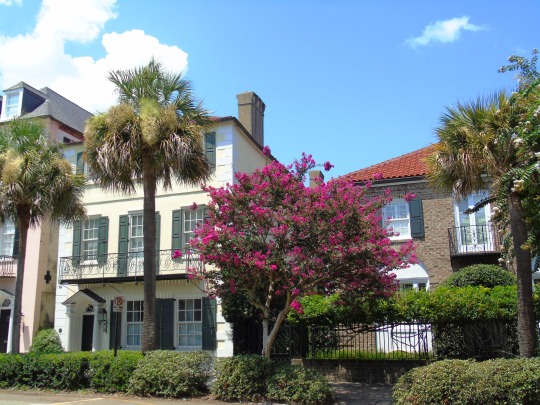
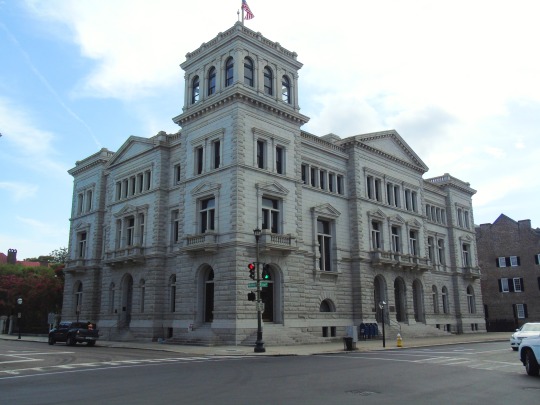


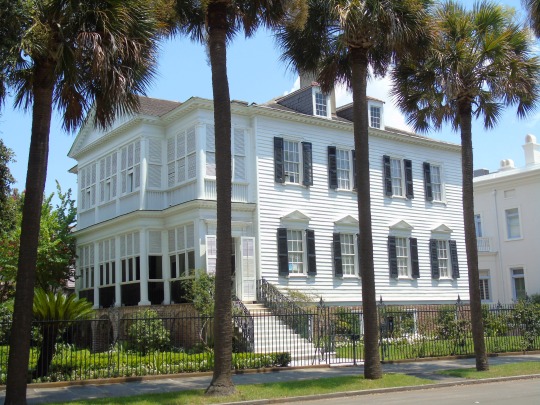



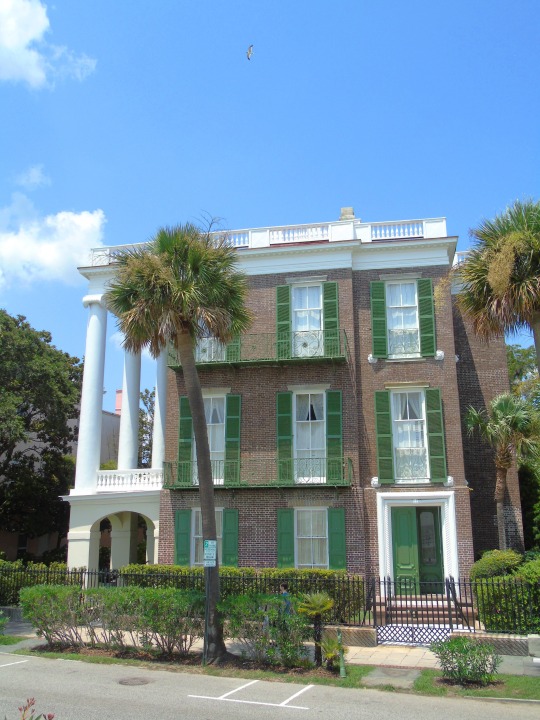
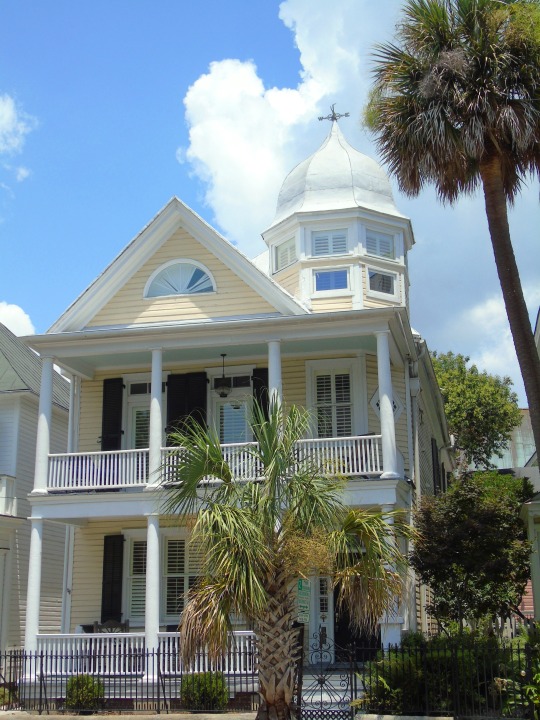
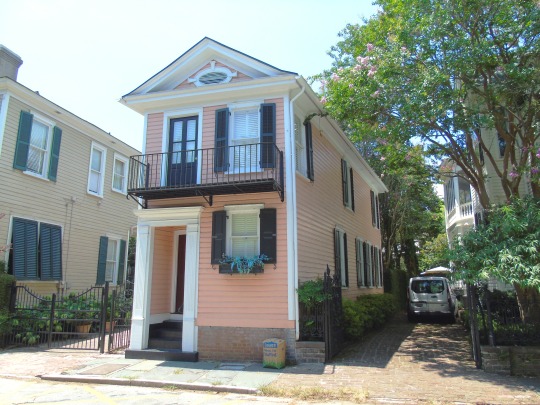
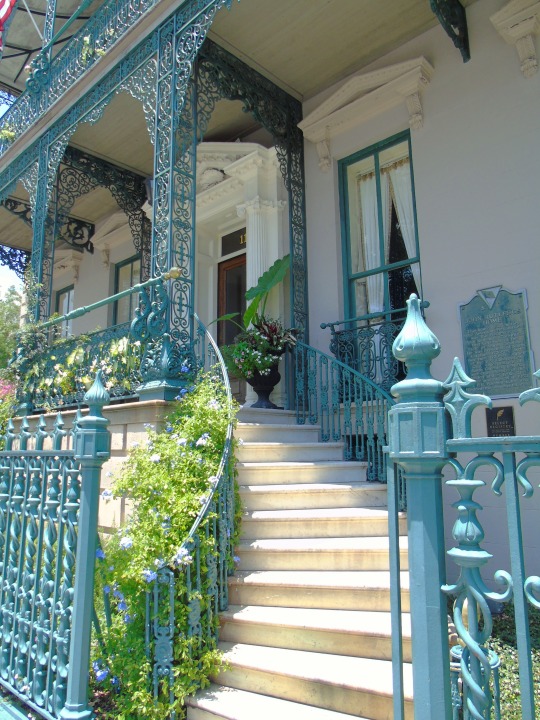
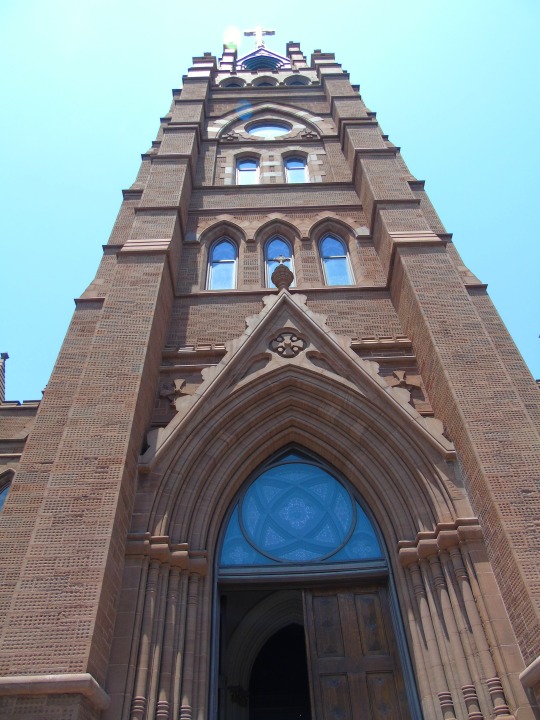
Charleston surrendered on February 18, 1865.
#18 February 1865#Charleston#surrendered#anniversary#USA#city hall#architecture#US Civil War#American Civil War#US history#travel#summer 2016#original photography#South Carolina#tourist attraction#St. Philips Church Episcopal West Cemetery#Unitarian Church#landmark#Louis DeSaussure House#Cathedral of St John the Baptist#Miles Brewton House#Cooper River#nature#water#reed#vacation#cityscape
6 notes
·
View notes